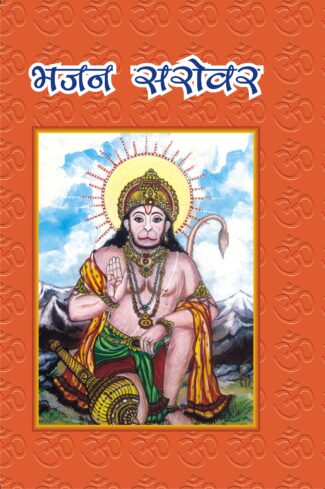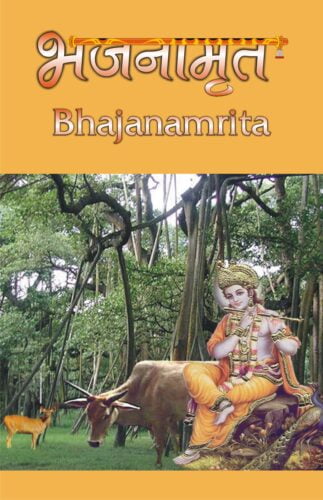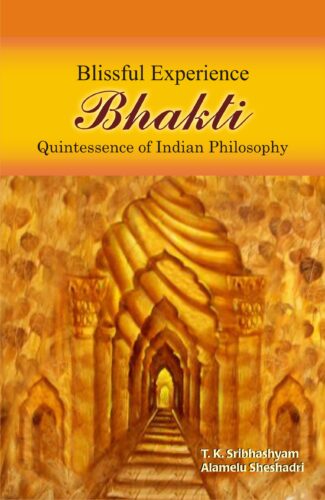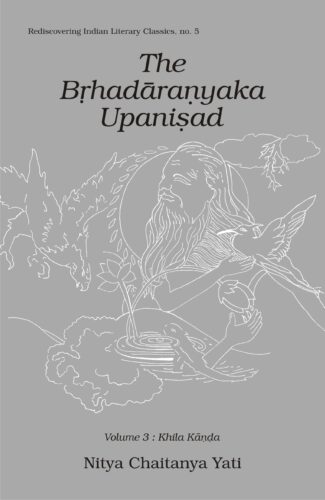Showing 21–30 of 322 results

Devotional songs frequently sung by the common public in praise of various Gods/Goddesses like Sri Ganesa, Siva, Krsna, Hanuman, Rama, Khattu Syama, Durga, etc. have been compiled in this hard-bound volume at a very nominal price.
Devotional songs frequently sung by the common public in praise of various Gods/Goddesses like Sri Ganesa, Siva, Krsna, Hanuman, Rama, Khattu Syama, Durga, etc. have been compiled in this hard-bound volume at a very nominal price.

This book is a collection of more than 350 bhajans. It has an amalgamation of old and new bhajans. Its bhajans are different from that of Bhajan Sarovar (Part 1). It is a rare kind of collection which all householders would like to keep in their house forever.
This book is a collection of more than 350 bhajans. It has an amalgamation of old and new bhajans. Its bhajans are different from that of Bhajan Sarovar (Part 1). It is a rare kind of collection which all householders would like to keep in their house forever.

This book contains, as the title suggests, the nectar or amrita of bhajans mostly in praise of Lord Krishna, the everplayful God in the Hindu pantheon. Each bhajan has been transliterated into Roman to facilitate the readers who cannot read Devanagiri to enjoy their singing.
This book contains, as the title suggests, the nectar or amrita of bhajans mostly in praise of Lord Krishna, the everplayful God in the Hindu pantheon. Each bhajan has been transliterated into Roman to facilitate the readers who cannot read Devanagiri to enjoy their singing.

This book drives one to the commendable social dignity that women adored during the Vedic period. The values of women were considered holy and pure. Literatures from Vedic period to the British rule glorify women and treat them with high esteem. Brahmavadini Gaargi, Durgavati of Gondavana, Rani Lakshmibai and Ahlyabhai, the towering personalities India, serve as the role model for Indian women and those who are engaged in women studies.
Respecting of women was prevalent in Indian culture ever since the Vedic period. The life values of women were considered holy and pure in those times. In the literature pertaining to Ramayana, Mahabharata, Upanishads, Buddhist, Middle Age and the British times, the highly respectable status of women is clearly shown. How differently were the women viewed at various times in different eras? Which were the women who made a special place for themselves in the different fields of life? In this context we remember Brahmavadini Gargi, Rajmahishi Durgavati of Gondvana, Queen Ahilyabai, Rani Lakshmibai of Jhansi, and some other women for their special contribution in maintaining the high status of women in Indian society.
Portraying the position of women in the ancient period and comparing them to the present times when life is full of struggles, this book becomes a valuable tool for the scholars engaged in women studies and also for the people specializing in Indian traditional culture besides the general readers.

In Hindu Society, Yama is considered the God of Death who is feared. Indians, do not dread death, but instead consider as their body part. This book gives in detail the study of death and its effect on society. The search goes to its roots in the most ancient times.
Yama, in Hindu mythology, is the eschatologist and god of death. And is, thus, dreaded. Even in todays India, there is a fearful hesitancy, if not conscious avoidance, of any talk about him. Yet, paradoxically, the phenomenon of death does not evoke a similar fear in the Indian psyche accepted, as it is, a natural event, a part of life: just like poverty, sickness and old age. Here is an insightful, at once compelling exposition of the phenomenon of death, based on plurimillennial tradition of the Hindus which, despite the affirmation of Western attitudes in certain elitist sections of the urban society, has endured since the times of the Vedas and Indic Civilization. Exploring, contextually, the age-old Indian view of mortal existence: from the very moment of an individuals conception to his/her journey to the Kingdom of Yama through the major phases of birth, growth and ageing, Professor Filippi unveils a complex network of sentiments, beliefs, scriptural references, customs, hopes, ritualistic practices and much else relevant to the great adventure of death. Notwithstanding the sentimental undertones of the mrityu-theme, Dr. Filippis work outstands for its rare scientific objectivity. It has grown from years of his rigorous research effort involving not only his extensive studies of Indian literature: classical and modern, but also his interviews with Indian samnyasins, brahmanas, relatives of the dead, and the persons living around the cremation grounds. Together with visual material, bibliographic references, and a glossary of non-English terms, the book holds out as much appeal to the general reader as to the specialist.

The study discusses importance of bhakti (devotion), pràpatti (self-surrender) and cultivation of peaceful emotions drawn from the great àcàrya’s intense and contemplative study of the Vedas, Upaniùads, the Bhagavad-Gãtà and the Puràõas.
Bhakti-yoga is seen as the direct path to perfection that leads to the very heart of religious consciousness. Ramanujas concept of bhakti (devotion) emphasised the practice of self-surrender through which a person realises his personality, strengths and weaknesses, and hidden powers. Bhakti, for him, acts as a link between mortals and the Ultimate Reality.
This book examines the views of Vishishtadvaita of Ramanuja on bhakti and prapatti (self-surrender). It studies in-depth the meaning of God, the soul and the Supreme Soul, and the world; the concept of bhakti; the different stages of bhakti referring to numerous sources that include the Vedas, the Bhagavad-Gita, the Upanishads and the Puranas. It focuses on Ramanujas teaching of bhakti, examining his philosophy in general and his sevenfold practice, Sadhana Saptaka to generate bhakti that expounds the qualities and significance of discrimination for viveka, freedom from sensual attachment or anger for securing vimoka, repeated reflection of God, performance of religious duty for inner mental strength, development of ethical virtues, freedom from despair and freedom from excessive joy. It understands the relevance of symbols in devotion and examines nature and use of symbols in Buddhism and Hinduism. The scholarly study discusses the importance and cultivation of peaceful emotions, and need for prayer and dietary regulations in devotion.
The volume will prove an indispensable work for scholars of Indian philosophy and religious studies.

This dialectical narration of the Brhadaranyaka Upanisad will help the reader discover the ancient seers timeless insights to appreciate an integrated system of thought and experience what is real and enduring in his/her own essence.
The Brihadaranyaka Upanishad is one of the ten major Upanishads. A dialectical narration that unabashedly stands up to the rational scrutiny of the modern mind, it is directed towards both the individual aspirant caught up in the dark morass of confusion and the philosophic thinker in search of rare pearls of wisdom from humanitys treasury. Guru Nityas matchles commentary will enable the reader to discover the ancient seers timeles insights, to appreciate a fully-developed, integrated system of thought, and, most importantly, to learn to connect with what is real and enduring in his or her own essence. Schematically, the Brihadaranyaka Upanishad a brilliant discourse from the Yajur Veda is set out in three volumes, entitled: Madhu Kanda, Muni Kanda and Khila Kanda. In his planned three-volume thorough-going, meticulously analytical commentary. Guru Nitya distills the wisdom teaching of the Brihadaranyaka Upanishad, drawing on his intimate understanding of the human psyche, as well as both Eastern and Western philosophy, science, art and literature. Dwelling in turn on each of its 435 mantras, its poetic charm, myths, metaphors, images and symbols, Guru Nitya recreates and expands the Upanishadic vision of our own nature, human interaction, and the cosmos, and their relation to the unmoved essence of all. With highly useful appendices and a comprehensive index, the commentary will hold an enduring appeal for both scholars and discerning readers.

This dialectical narration of the Brhadaranyaka Upanisad will help the reader discover the ancient seers timeless insights to appreciate an integrated system of thought and experience what is real and enduring in his/her own essence.
The Brihadaranyaka Upanishad is one of the ten major Upanishads. A dialectical narration that unabashedly stands up to the rational scrutiny of the modern mind, it is directed towards both the individual aspirant caught up in the dark morass of confusion and the philosophic thinker in search of rare pearls of wisdom from humanitys treasury. Guru Nityas matchles commentary will enable the reader to discover the ancient seers timeles insights, to appreciate a fully-developed, integrated system of thought, and, most importantly, to learn to connect with what is real and enduring in his or her own essence. Schematically, the Brihadaranyaka Upanishad a brilliant discourse from the Yajur Veda is set out in three volumes, entitled: Madhu Kanda, Muni Kanda and Khila Kanda. In his planned three-volume thorough-going, meticulously analytical commentary. Guru Nitya distills the wisdom teaching of the Brihadaranyaka Upanishad, drawing on his intimate understanding of the human psyche, as well as both Eastern and Western philosophy, science, art and literature. Dwelling in turn on each of its 435 mantras, its poetic charm, myths, metaphors, images and symbols, Guru Nitya recreates and expands the Upanishadic vision of our own nature, human interaction, and the cosmos, and their relation to the unmoved essence of all. With highly useful appendices and a comprehensive index, the commentary will hold an enduring appeal for both scholars and discerning readers.

This dialectical narration of the Brhadaranyaka Upanisad will help the reader discover the ancient seers timeless insights to appreciate an integrated system of thought and experience what is real and enduring in his/her own essence.
The Brihadaranyaka Upanishad is one of the ten major Upanishads. A dialectical narration that unabashedly stands up to the rational scrutiny of the modern mind, it is directed towards both the individual aspirant caught up in the dark morass of confusion and the philosophic thinker in search of rare pearls of wisdom from humanitys treasury. Guru Nityas matchles commentary will enable the reader to discover the ancient seers timeles insights, to appreciate a fully-developed, integrated system of thought, and, most importantly, to learn to connect with what is real and enduring in his or her own essence. Schematically, the Brihadaranyaka Upanishad a brilliant discourse from the Yajur Veda is set out in three volumes, entitled: Madhu Kanda, Muni Kanda and Khila Kanda. In his planned three-volume thorough-going, meticulously analytical commentary. Guru Nitya distills the wisdom teaching of the Brihadaranyaka Upanishad, drawing on his intimate understanding of the human psyche, as well as both Eastern and Western philosophy, science, art and literature. Dwelling in turn on each of its 435 mantras, its poetic charm, myths, metaphors, images and symbols, Guru Nitya recreates and expands the Upanishadic vision of our own nature, human interaction, and the cosmos, and their relation to the unmoved essence of all. With highly useful appendices and a comprehensive index, the commentary will hold an enduring appeal for both scholars and discerning readers.

This dialectical narration of the Brhadaranyaka Upanisad will help the reader discover the ancient seers’ timeless insights to appreciate an integrated system of thought and experience what is real and enduring in his/her own essence.
The Brihadaranyaka Upanishad is one of the ten major Upanishads. A dialectical narration that unabashedly stands up to the rational scrutiny of the modern mind, it is directed towards both the individual aspirant caught up in the dark morass of confusion and the philosophic thinker in search of rare pearls of wisdom from humanity’s treasury. Guru Nitya’s matchles commentary will enable the reader to discover the ancient seer’s timeles insights, to appreciate a fully-developed, integrated system of thought, and, most importantly, to learn to connect with what is real and enduring in his or her own essence. Schematically, the Brihadaranyaka Upanishad — a brilliant discourse from the Yajur Veda — is set out in three volumes, entitled: Madhu Kanda, Muni Kanda and Khila Kanda. In his planned three-volume thorough-going, meticulously analytical commentary. Guru Nitya distills the wisdom teaching of the Brihadaranyaka Upanishad, drawing on his intimate understanding of the human psyche, as well as both Eastern and Western philosophy, science, art and literature. Dwelling in turn on each of its 435 mantras, its poetic charm, myths, metaphors, images and symbols, Guru Nitya recreates and expands the Upanishadic vision of our own nature, human interaction, and the cosmos, and their relation to the unmoved essence of all. With highly useful appendices and a comprehensive index, the commentary will hold an enduring appeal for both scholars and discerning readers.
| There are no products |